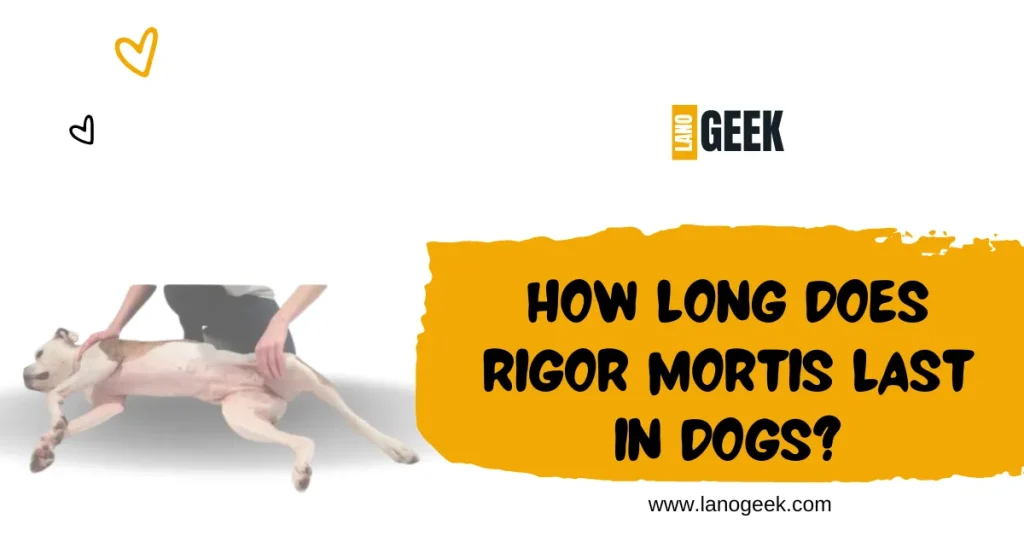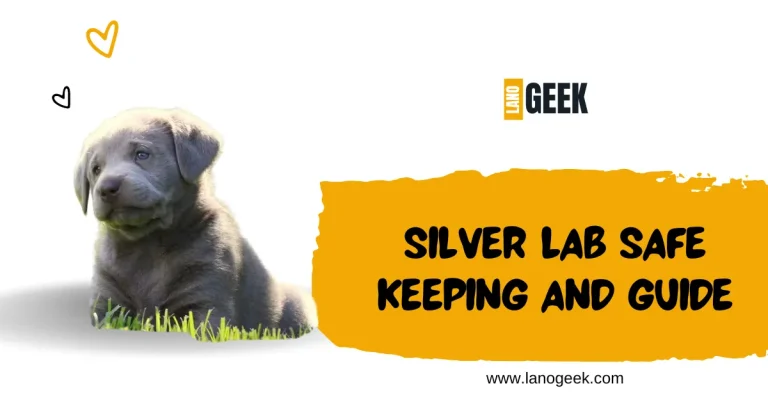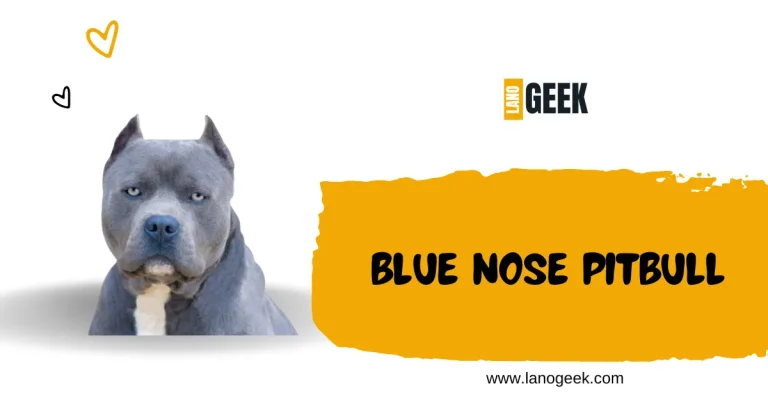Losing a beloved pet suddenly is very painful, and it can be hard to handle emotionally. It becomes even tougher when you have to make quick decisions about what to do with your pet’s body. Knowing what steps to take can help you manage this situation carefully and respectfully. If your dog dies at home, acting promptly is important to handle their body properly and prevent it from decaying. This guide gives practical advice on what to do if your dog passes away at home. It covers confirming the death, seeking support, and storing the body until you can arrange for burial or cremation. By preparing ahead and understanding the process, you can honor your pet’s memory and navigate this tough time with kindness and care.
Recent Read: How Long Does Rigor Mortis Last In Dogs
Assess The Situation
Dealing with the sudden passing of your dog can be incredibly shocking and emotional. However, it’s crucial to remain calm and take immediate steps to ensure your pet’s remains are handled properly. Here’s how to assess the situation:
Confirm Death
Check for Signs of Life: First, make sure your dog has passed away. Look for signs like a heartbeat or breathing. If you’re not sure, it’s better to get help from a professional.
Administer First Aid: If you’re uncertain about your dog’s condition, try giving CPR or first aid. Sometimes, what seems like death might be unconsciousness or a medical issue needing urgent care. CPR for dogs involves chest compressions and rescue breaths, which you can learn from your vet or online pet care sources.
Get Veterinary Help: If you can’t confirm your dog’s passing or suspect they might still be alive, take them to the nearest vet clinic right away. Vets have the skills and tools to confirm if your pet has passed away or if there’s a chance to save them.
Contact Your Veterinarian
During Regular Vet Hours: If your dog passes away when your vet is open, contact them right away. They’ll advise you on what to do next, such as handling the body or connecting you with a pet cremation or burial service. Many vets can also temporarily store your pet’s body until you arrange for aftercare.
After-Hours Support: If your dog dies outside normal vet hours, stay calm. Many areas have emergency vet clinics open 24/7. These clinics can provide immediate help and assist with your pet’s remains. They may also have contacts for local services that handle pet cremation or burial, offering the support you need during this tough time.
Call For Help
Emotional Support: Losing a pet is an emotionally taxing experience, and it’s important not to go through it alone. Reach out to a close friend or family member for emotional support and practical assistance. Their presence can provide comfort and help you manage the immediate tasks at hand.
Delegate if Needed: If you find it too difficult to handle your pet’s body yourself, it’s perfectly okay to ask someone else to help. Choose a person who is comfortable with the task and can handle the situation with the respect your pet deserves. This support can make a significant difference in managing your emotions and ensuring your pet is treated with dignity.
Handling the Pet’s Body
When your dog passes away at home, handling their body respectfully and promptly is essential to prevent decomposition and ensure dignified treatment. Here’s how to manage this sensitive task:
Immediate Action Required:
- Time Sensitivity: The moment your dog passes away, decomposition begins. Act swiftly to minimize these effects, especially in warmer temperatures where decomposition accelerates.
- Understanding Rigor Mortis: Shortly after death, rigor mortis sets in, causing stiffness in the joints. This process typically starts within 10 minutes to 3 hours and can last up to 72 hours. The timing and intensity may vary based on environmental factors like temperature.
Preparation and Storage of Remains
- Use of Gloves: Put on latex gloves before handling your dog’s body to protect yourself from bodily fluids and potential contaminants.
- Cleaning the Body: It’s common for bodily fluids to be released upon death. Gently clean areas around the mouth, genitals, and anus if needed to maintain hygiene and dignity.
Wrapping and Securing the Body
- Choosing Materials: Prepare a blanket, towel, or sheet large enough to wrap your dog’s body comfortably and with respect.
- Positioning for Rest: Place your dog on their side in a natural sleeping position. This posture not only respects their final moments but also aids in handling.
- Double-Bagging for Security: Use heavy-duty plastic trash bags to wrap the body securely. For larger dogs or thin bags, double-bagging is recommended to contain fluids and odors effectively.
Temporary Storage Options
- Refrigeration or Freezing: Ideally, store your dog’s remains in a refrigerator or freezer until you arrange for burial or cremation. This preserves the body and mitigates odor.
- Short-term Alternatives: If refrigeration or freezing isn’t available, a cool, well-ventilated area like a garage or basement can serve as a temporary solution. Use additional layers of bags to manage odor and maintain cleanliness.
Preparation And Storage
Properly preparing and storing your dog’s remains after their passing is crucial for maintaining dignity and managing practical considerations. Here’s how to handle this sensitive aspect with care:
Preparation and Storage of Remains
Properly preparing and storing your dog’s remains after their passing is crucial for maintaining dignity and managing practical considerations. Here’s how to handle this sensitive aspect with care:
Wear Gloves
Protective Measures: Before handling your dog’s body, wear latex gloves to minimize contact with bodily fluids and ensure personal hygiene.
Cleaning: If bodily fluids are present, gently cleanse the areas around the mouth, genitals, and anus to maintain cleanliness and respect for your pet.
Wrap The Body Securely
Choose Suitable Material: Use a blanket, towel, or bed sheet to wrap your dog’s body. Arrange them in a comfortable and natural sleeping position to honor their final moments.
Secure with Heavy-Duty Bags: Place the wrapped body into heavy-duty plastic trash bags. For larger dogs or thin bags, consider using multiple layers or double-bagging to contain odors and fluids effectively.
Labeling: Securely knot or tape the bags closed and label them with your and your dog’s names. This ensures proper identification throughout the handling and transport process.
Temporary Storage Options
Refrigeration or Freezing: Ideally, store your dog’s remains in a refrigerator or freezer until arrangements for burial, cremation, or other disposition can be made. This helps preserve the body and mitigate decomposition and odor.
Alternative Solutions: If immediate refrigeration or freezing isn’t feasible, place the wrapped body in a cool, well-ventilated area such as a garage or basement. Use additional layers of bags to manage odor and maintain cleanliness for up to 4-6 hours.
Protective Measures: Before handling your dog’s body, wear latex gloves to minimize contact with bodily fluids and ensure personal hygiene.
Cleaning: If bodily fluids are present, gently cleanse the areas around the mouth, genitals, and anus to maintain cleanliness and respect for your pet.
Wrap the Body Securely
Choose Suitable Material: Use a blanket, towel, or bed sheet to wrap your dog’s body. Arrange them in a comfortable and natural sleeping position to honor their final moments.
Secure with Heavy-Duty Bags: Place the wrapped body into heavy-duty plastic trash bags. For larger dogs or thin bags, consider using multiple layers or double-bagging to contain odors and fluids effectively.
Labeling: Securely knot or tape the bags closed and label them with your and your dog’s names. This ensures proper identification throughout the handling and transport process.
Temporary Storage Options
Refrigeration or Freezing: Ideally, store your dog’s remains in a refrigerator or freezer until arrangements for burial, cremation, or other disposition can be made. This helps preserve the body and mitigate decomposition and odor.
Alternative Solutions: If immediate refrigeration or freezing isn’t feasible, place the wrapped body in a cool, well-ventilated area such as a garage or basement. Use additional layers of bags to manage odor and maintain cleanliness for up to 4-6 hours.
Conclusion
Losing a dog is very emotional, and it’s important to handle their passing with care and respect. In this guide, we’ve outlined practical steps to help you through this tough time. First, lean on friends, family, or your vet for support. They can provide emotional and practical advice. Confirm your dog’s passing and, if needed, perform CPR or get veterinary help promptly. Use gloves and gentle cleaning when handling their body. Wrap them in a blanket and secure in sturdy bags to keep clean and reduce odor. Store them temporarily in a cool place until you arrange burial or cremation, following local laws. Honor your dog with a memorial that suits your bond, whether it’s a burial or keeping ashes in an urn. By following these steps with compassion, you can say goodbye to your beloved dog with love and dignity.






